Like a lot of people online now, we’re talking about the Instagram algorithm.
According to Forbes, algorithms “are what all social media platforms run on these days”. To pave the way to Instagram success for your business, you first need to understand how algorithms work. Just as you’d want to understand how a new car works before taking it to the road.
Be it coffee shops, the gym or at events, there are a lot of people Instagramming their day. Social media today tracks pretty much every milestone in our lives … including what they had for breakfast (avo on toast again, Jenny? Tops).
This new culture presents an opportunity for users to leverage the app. Both individuals and businesses alike can promote their brand and boost sales. While we’ve shared some tips on stories, creating great viral content and becoming a pro at the art of hashtags (#LifeGoals), what you probably aren’t aware of is the impact that under the hood can have on your success.
Here’s how the Instagram algorithm started
Looking back on its humble beginnings, the Instagram feed followed a reverse-chronological order. You’d see newer content first, and would see older posts the further back you scrolled (or furiously flicked your finger). If you’d logged on recently, you’d probably continue scrolling until you came across photos you’d seen prior. This meant you’d seen everything that was posted by all accounts you follow. In 2016, Instagram changed this pattern (hooray!).
Out with the old and in with the new
The Instagram team created a new algorithm. One that would give users a more personalised experience, working to achieve Instagram’s goal of longer app visits. The more time we stay on the platform, the more Instagram makes in ad revenue. So it’s in the app’s best interest to enhance the user experience.
Although, with the changes came to a lot of confusion. Instagrammers were left wondering. Why are we seeing posts out of order? Why is the app was following this seemingly random algorithm? Kim Kardashian would have been in a tiz! In 2018, Instagram broke its silence in a San Francisco press conference. Here, their production team explained the new algorithm.
The new system uses ranking signals to determine where posts appear. This made every user’s Instagram feed unique in appearance (even if multiple individuals follow all the same accounts!). Some of these signals include:
- Frequency of use – this depends on how often a user opens the app.
- Following count – if you follow lots of accounts, you may see fewer posts from any one specific user. Even if some of the users you follow post often, you’ll see a wide variety of posts overall, as opposed to all of one account’s content. But, if you follow a smaller number of accounts, you’re more likely to see the majority of each account’s posts.
- Usage (or session time) – someone who spends 45 minutes on Instagram will go further back as they scroll, as opposed to a user who scans for 5 minutes. The longer you’re on the app, the more likely you are to see older content that hasn’t performed as well, while the shorter users only catch the highlights.
But wait, there’s more!
While your habits on Instagram – how many accounts you follow, when you log on and for how long – are needed to understand the user, Instagram’s main three ranking signals are; relationships, interest and timeliness.
1. Relationships
Because your Instagram feed isn’t just based on which accounts you follow, but rather who you’re close with, the relationships with your friends and family are recognised. The app prioritises content from accounts that you interact with a lot, as it assumes you’re closest to these accounts. So any account that you often DM, tag, comment, or turn on specific notifications for, Instagram considers you to be “close” with.
The creators behind Instagram say this allows users to see 90% of the content they would consider important, rather than the original 50% that the old algorithm allowed for. Who and what you like (the posts Instagram thinks you’re more likely to interact with) appear higher in your feed. This brings us to the second main ranking signal…
2. Interest
The platform is able to predict which posts will be considered important to users. As mentioned above, this can be determined by who has created the post, but it’s also based on data from the app. An account’s past behaviour (how it interreacts with content) can give Instagram a hint at the types of posts you’ll enjoy in the future. Once it knows what photos and videos you like seeing, the app uses machine vision (also known as image recognition) technology to find more posts like that.
For example, if you’re a sporting enthusiast who often likes pictures of people hiking, the machine vision may recognise a lot of nature in your posts and offer you more content with lots of greenery. This is all part of the algorithm’s desire to give users more of what they want. And finally…
3. Timeliness/regency
The time at which posts are uploaded remained an integral part of the even when the new algorithm took place. Newer posts still continue to appear higher, but with consideration for the platform’s other key ranking signals. So, between a brand you like, and your best friend, who’s content do you think you’ll see first? While you’re likely to give the posts from the brand alike every so often, this is enough to compete with a close friend, whose posts you always like and comment on, and with whom you regularly share DMs. It’s likely your friend will appear higher in your feed than the brand (even if the brand posts every day and your friend only posts once a fortnight).
How can my business make it through the algorithm maze to become a pro at Instagram?
From a marketing perspective, these ranking signals can be very beneficial. Consistency will be rewarded, so there’s no use trying to post fantastic content every day, at the best time for your followers, if you can only keep it up for a week.
Keep it manageable.
Instagram Insights and Analytics can give you a little bit of assistance to work out your plan of attack. The key thing to know is that how often you post, as well as what type of content you post will depend on your business, brand, resources, audience and goals.
Keeping up with your notifications can help too. If Instagram sees you’re replying to comments on your posts, liking content from your followers/other accounts, and replying to DMs, it’ll reward your account with the extra data it has collected from these engagements. The more you and your followers engage, the more likely Instagram will group you as “close”, which will ensure they see even more of your posts. Plus, it’ll help your brand seem more personal in the eyes of your followers, who will be stoked to see a reply on their comments.
Accounts that are “close” will also be more likely to see each other’s stories, as these users will appear closer to the beginning of the row showing available stories.
Another top tip is posting good content, whilst keeping to a specific aesthetic. Using high-quality images will perform better on Instagram, and will simply look nicer to followers. Some brands follow a colour scheme, or stick to a branding font, so when grouped together on their account homepage, the feel is clean and organised.
The Instagram Explore page uses a similar algorithm, so following these few tips can help you reach more potential followers, too!
It just means you’ll need to pay attention to who your main followers (“close” users) are, when they’re online (ensuring your posts are timely), and how they engage with your content (what interests them).



